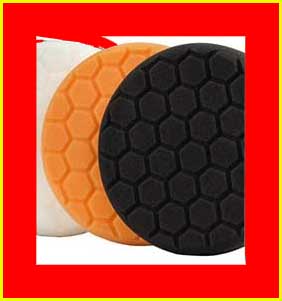CuriousCarl
Click here to upgrade
- Reaction score
- 3
- Thunderbird Year
- 1955
Hi everyone!
So almost a year ago, I joined this awesome forum and asked about a strange backend/continental kit for a 1955 (thread). Then a few months later I asked a few questions about restoration costs (thread) for my great-great grandmother's 1955 Thunderbird and you all were amazing. Well, we did it. We had the car towed to a reputable Thunderbird shop and had them get it road ready (updated pictures below). Driving it home from the shop was a bit nerve-racking as I have VERY little automotive or mechanical knowledge, but I couldn't be happier. Now the small restoration begins which I'm hoping to do myself. We still need to have the soft top and the interior restored, as well as paint (if we decide on that) and lining the trunk. After driving it the past couple days, I've noticed a few things that I was hoping you all might be able to help me with since, like I said, I know almost nothing about cars, engine, or maintenance (I'm learning, I swear!) and you all were so incredibly kind the first couple times I posted.
-When starting it cold (essentially starting it a day or two after it's not been driven), it doesn't fire up right away. I can hear it trying to turn over but it doesn't seem to engage. On the second attempt, it's fired up no problem. Is that normal?
-There's a bit of oil leakage under the engine after driving it. It doesn't seem to be anything too concerning but it's probably the size of beer coaster.
-We took it on the freeway (stayed in the slow lane) and after we returned to service streets, I noticed the handling was a bit sloppy. Like I was lightly fighting the car. After getting lunch, the handling seemed fine. Does the handling loosen when driven? Or was this just my imagination and bad roads?
-There's a pipe underneath the engine that seemed to be blowing out either smoke, or steam. That's, uh... supposed to be there, right? (I'm so embarrassed asking that question.)
-The brakes are brand new, but they still squeak when coming to a stop. Will that subside?
-Any other tips, things I should know, or recommendations to keep up the car or restore it?
Thank you all so incredibly much. I truly appreciate it.






So almost a year ago, I joined this awesome forum and asked about a strange backend/continental kit for a 1955 (thread). Then a few months later I asked a few questions about restoration costs (thread) for my great-great grandmother's 1955 Thunderbird and you all were amazing. Well, we did it. We had the car towed to a reputable Thunderbird shop and had them get it road ready (updated pictures below). Driving it home from the shop was a bit nerve-racking as I have VERY little automotive or mechanical knowledge, but I couldn't be happier. Now the small restoration begins which I'm hoping to do myself. We still need to have the soft top and the interior restored, as well as paint (if we decide on that) and lining the trunk. After driving it the past couple days, I've noticed a few things that I was hoping you all might be able to help me with since, like I said, I know almost nothing about cars, engine, or maintenance (I'm learning, I swear!) and you all were so incredibly kind the first couple times I posted.
-When starting it cold (essentially starting it a day or two after it's not been driven), it doesn't fire up right away. I can hear it trying to turn over but it doesn't seem to engage. On the second attempt, it's fired up no problem. Is that normal?
-There's a bit of oil leakage under the engine after driving it. It doesn't seem to be anything too concerning but it's probably the size of beer coaster.
-We took it on the freeway (stayed in the slow lane) and after we returned to service streets, I noticed the handling was a bit sloppy. Like I was lightly fighting the car. After getting lunch, the handling seemed fine. Does the handling loosen when driven? Or was this just my imagination and bad roads?
-There's a pipe underneath the engine that seemed to be blowing out either smoke, or steam. That's, uh... supposed to be there, right? (I'm so embarrassed asking that question.)
-The brakes are brand new, but they still squeak when coming to a stop. Will that subside?
-Any other tips, things I should know, or recommendations to keep up the car or restore it?
Thank you all so incredibly much. I truly appreciate it.







This page contains affiliate links for which I may be compensated. As an eBay Partner, and Amazon Associate I may be compensated if you make a purchase at no cost to you.


